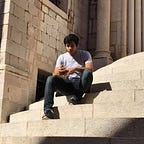Managing the Parking Transition — A Call for More Data
The mobility landscape in most American cities has been heavily influenced by personal car ownership and use. Even in a city like San Francisco with an extensive public transport system and the 5th lowest car ownership rates in the country, 7 in 10 households have a car.
The dependence on personal car ownership ultimately leads to negative externalities such as increased congestion and greenhouse gas emissions. It also creates a demand for parking spaces which occupy precious real estate in cities. Finally, the provision of parking itself can promote more driving, creating an undesired cycle where more driving leads to more parking spaces and vice-versa.
Ridesharing services such as Uber, in conjunction with traditional public transportation and other shared modes, are working to provide a suite of options that move people away from a dependence on owning a car. As ridesharing has grown in markets like San Francisco, our Policy Research team here at Uber was eager to study its impact on parking demand.
Unfortunately, data on parking is extremely hard to come by. Even basic supply is hard to measure — few cities have an idea how many spaces they have, and national estimates of total available parking range from 105 million to as many as 2 billion. Actual usage data is even more difficult to measure. Most cities monitor parking usage through annual parking studies that use manual counts to capture static occupancy figures. Even a recent research paper of the efficacy of SFpark, San Francisco’s sophisticated on-street dynamic pricing program, relied on human observation to capture data on empty spaces.
This lack of data is a serious issue. Cities across the country have long designed parking standards that mandate how many spaces real estate developers must provide, and these standards are often based on the flimsiest of data on parking occupancy. As we move towards a world where on-demand mobility services like Uber become a much larger share of the overall transportation system, many are predicting that we will need vastly less parking than we do today.
But how can the transition away from our current parking norms be managed? How can ridesharing services help play a role? We would love to be part of the conversation, and would love to work collaboratively on putting our heads together. If you’re interested, please reach out to mobility-research@uber.com.
As a first step, we’ve been collaborating with Smarking, a technology company based in San Francisco that specializes in working with transaction level parking data, to study two public parking garages in the heart of San Francisco where data was available: Sutter-Stockton and Japan Center.
As most people know, since 2012, both employment and population in and around San Francisco have been growing — both strong indicators of increased travel demand. Between July 2012 and 2015, employment increased by 11% in the San Francisco metropolitan area, while the county’s population increased by an estimated 4.2%. One would expect this additional travel demand to translate into additional demand for parking, but parking demand in these two garages has remained fairly stable (parking costs have remained unchanged during this period). In other words, the expected increase in parking demand due to the implied increase in travel demand has not been observed. This suggests the expected increase might be being offset by people who are choosing to leave their cars at home and use other options such as public transit or ridesharing.
To focus on one particular use case where we know Uber has had its most significant impacts, we looked at parking data during weekend late nights (Friday and Saturday nights, 10pm-4am). Exits from Japan Center Garage have been declining since 2012 and from Sutter-Stockton Garage since mid-2014. Fewer exits (and entries) from these parking lots mean fewer people are choosing to drive themselves during this period. This is even more promising as weekend night times have the highest rate of alcohol related road fatalities making it arguably the most unsafe time to be driving on the road.
For comparison, we looked at late-night weekend Uber pickups near the garages (within 500m). Late-night Uber trips starting near these garages have been rapidly increasing. While these parking demand and ridesharing trends do not imply causation, they paint an interesting picture of how personal mobility might be evolving.
While two garages in one city is obviously a small sample of data, we wanted to see if we could detect any patterns in parking data with a relationship to Uber’s activity data. Though our analysis only looks at two garages, it gives us a glimpse into how car use, parking, and ridesharing patterns are evolving.
There is obviously much more to dive into, and we’re interested in studying this further. If you have ideas or are aware of parking data sources that could push this research along, we’d love to hear from you. Making smarter decisions about parking will be one of the chief benefits of ridesharing technology, and we’d love to find ways to move this conversation forward.
